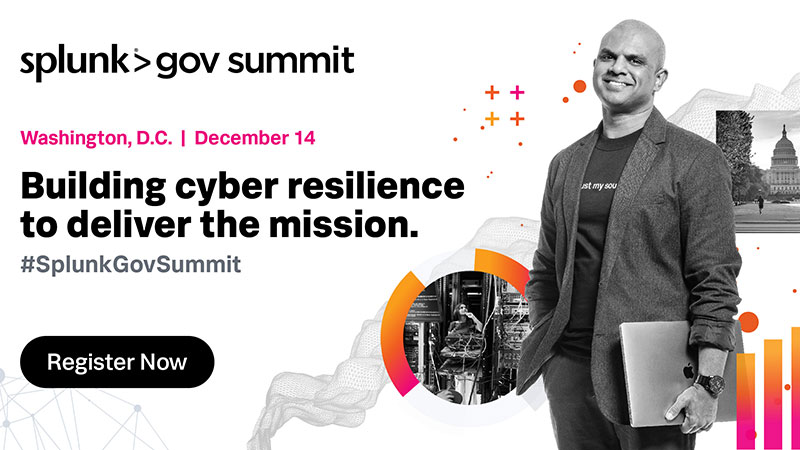
The Federal government is due for a “customer-centric” redesign to address the primary root causes of customer experience (CX) challenges, according to a new report from the Partnership for Public Service and Accenture Federal Services.
The report, “Designing a Government for the People: Collaborative Approaches to Federal Customer Experience,” argues that the primary root cause of most CX challenges is that “much of government structure and regulation was not designed with customers in mind.”
“Designing and implementing customer solutions within this government-centric framework will always be a challenge,” the report says. “Administration, agency, and congressional leaders must work together to redesign a government that is capable of not just understanding all its customers’ needs but also of building solutions for them and being accountable for how well those customers’ needs are met.”
The Biden administration has taken action to tackle CX challenges through the President’s Management Agenda (PMA) and the accompanying customer experience executive order.
While the two identify clear CX goals and targeted actions, the report stresses that these mandates “demand a seismic shift in how government does business.”
In particular, the report notes that all parts of government must be designed around customers’ lives and need to deliver a simple, seamless, and secure customer experience. It emphasizes that the government must build systems for the customer – not for the convenience of government.
“Truly shifting from a culture of waivers and workarounds to a deeply embedded, customer-centric mindset requires greater collaboration and investment among multiple stakeholders beyond the core CX community – including finance, human resources, legal, and beyond – to address long-standing barriers,” said Megan Peterman, customer experience and design leader at Accenture Federal Services.
“Our report lays out a blueprint for building on the progress made to design customer journeys that mirror life experiences and deliver more equitable services for all,” she added.
The Road to a Customer-Centric Government
The report outlines four bold actions that are needed to build a government geared toward better service for people:
- Fully authorize and hire for the talent needs of a customer-centric government, both within and across agencies, and professionalize the customer experience career field;
- Fully and flexibly fund customer experience budgets from the customer’s perspective, allowing for cross-agency investments, programs, and resources;
- Enable common customer data sharing in a secure environment – supported by emerging technologies and centralized data-sharing authorities and agreements – and pass legislation such as the Federal Agency Customer Experience Act; and
- Redesign regulatory and statutory customer experience frameworks to streamline recertification, access, and eligibility; make COVID-19-driven flexibilities permanent; and build a culture of decision-making that consistently works to the customer’s benefit.
Additionally, the report identifies seven key ingredients for accelerating the administration’s customer experience goals. These include empowered leadership, an engaged and accountable agency enterprise, a knowledge mobilization strategy for customer solutions, a comprehensive data-sharing policy infrastructure, a digital enterprise to support consistent customer experience, external partnerships for expert knowledge and trusted communication, and co-design of services with customers.
The final ingredient is one that Loren DeJonge Schulman, vice president of research, evaluation, and modernizing government at the Partnership for Public Service, said she is particularly excited about.
“Our final recommendation, to co-design services with customers, has me excited about the potential for future interactions with the government. If agencies listen to customers first, they can overcome historic physical, emotional, and resource barriers,” Schulman said.

Robin Carnahan, General Services Administration (GSA) administrator, said she is “encouraged” by this customer-centric approach and stressed that the Federal government needs “to do more of that” going forward.
“The notion is that we want to start from the user’s point of view, the citizen’s point of view, and think about that experience in creating one that is more seamless, and secure, and simple,” Carnahan said today during the Partnership for Public Service and Accenture Federal Services’ annual customer experience summit.
“What we want to do is just reduce the friction, right? Make it easy to apply, have the experience be simpler and intuitive – all of that. So, I’m encouraged because there’s just such a focus on it,” she added.
In order to design services for the public, the report says Federal agencies, Congress, and the Office of Management and Budget may need to work together to redesign today’s CX statutory and regulatory foundation.
The report also recommends that Federal agencies work to build a culture and expectation of decision-making that is to the customer’s benefit – and where customer collaboration in design is the standard.
“A seamless approach to customers’ life experiences – like experiencing a disaster or managing financial insecurity – is impossible without a fundamental rewiring of policy architecture and the oversight infrastructure that comes with it,” the report says. “But until such fundamental reforms are realized, smaller-scale redesigns could go a long way to improving the public’s relationship with the government.”
